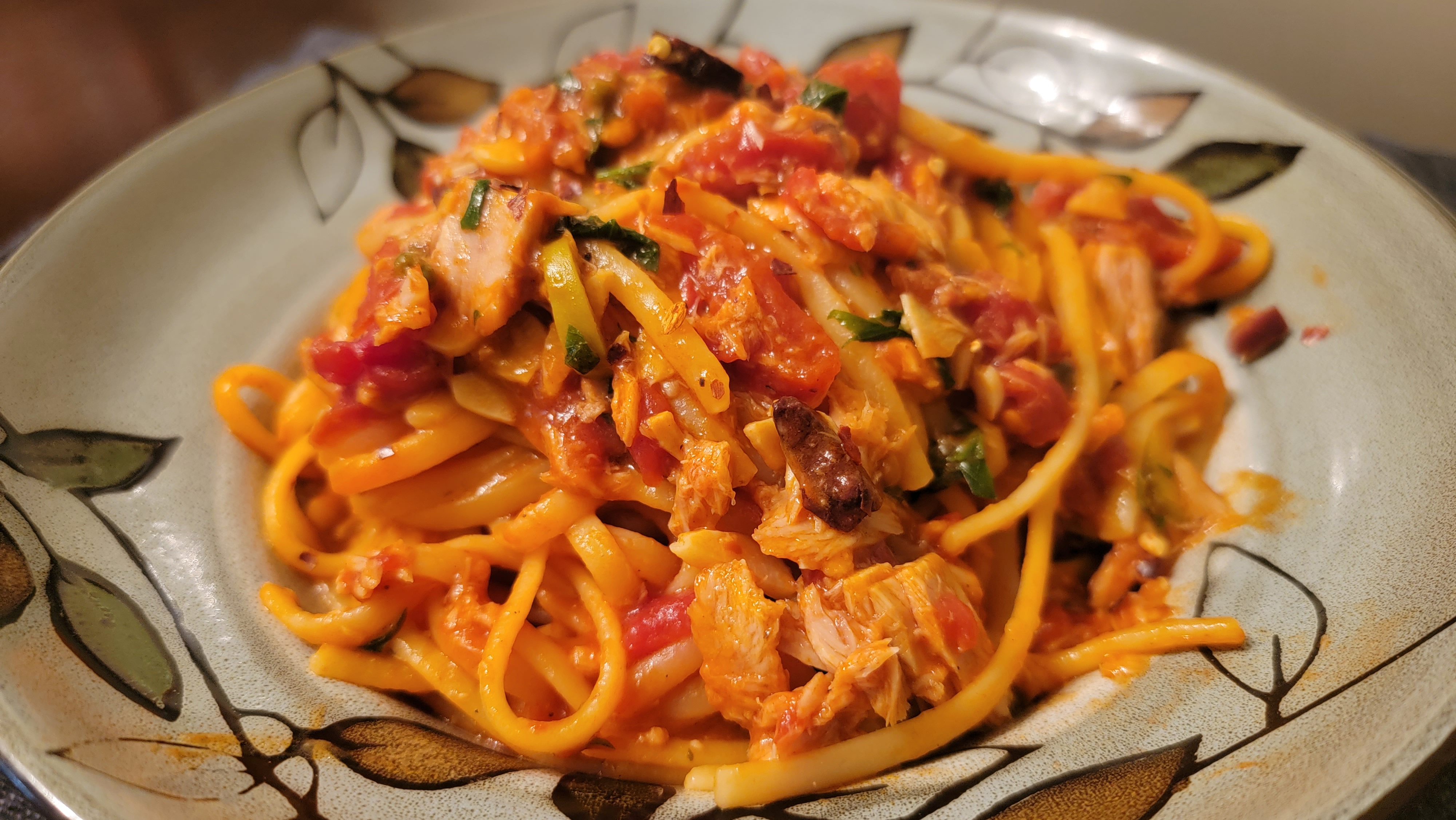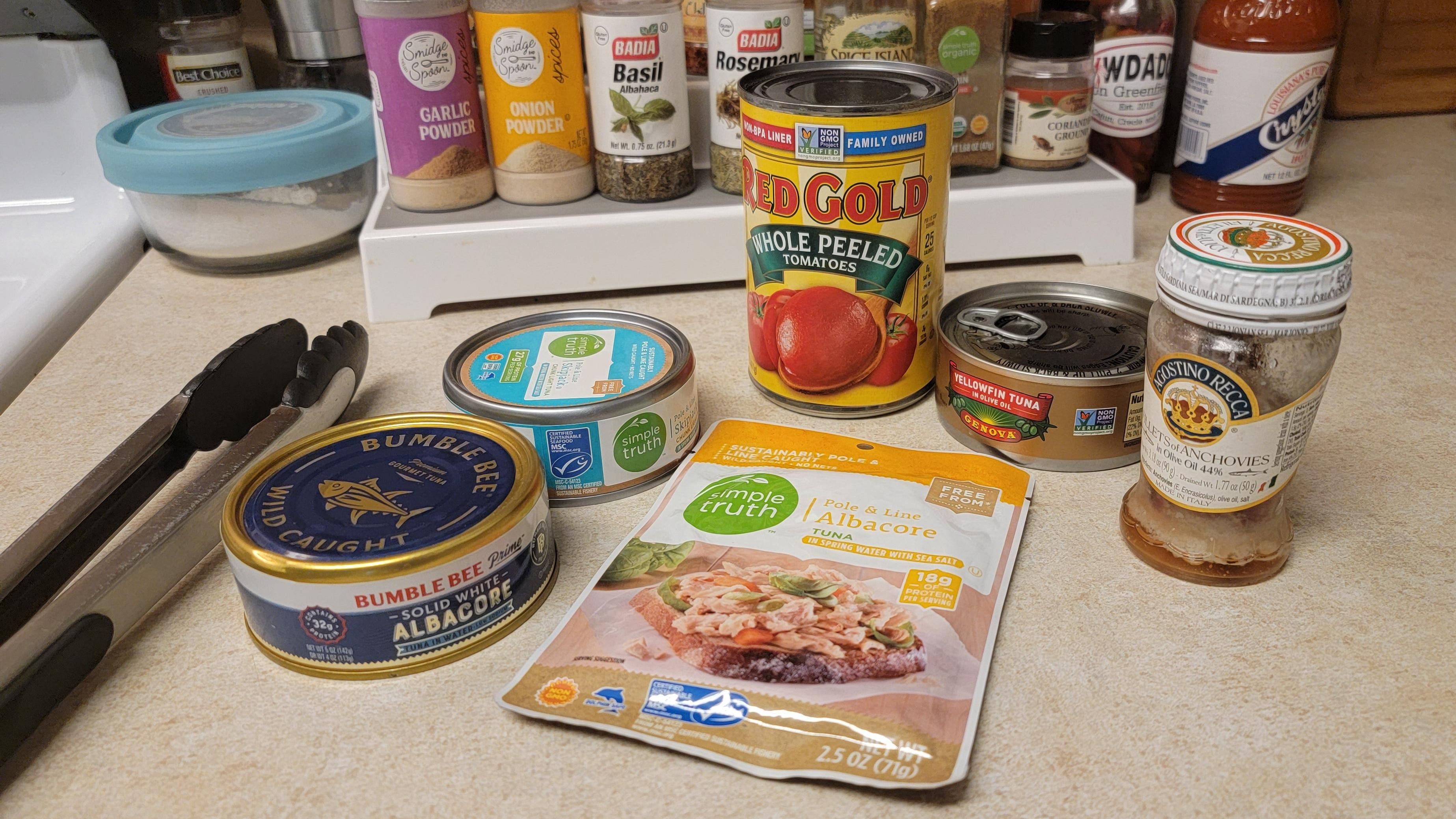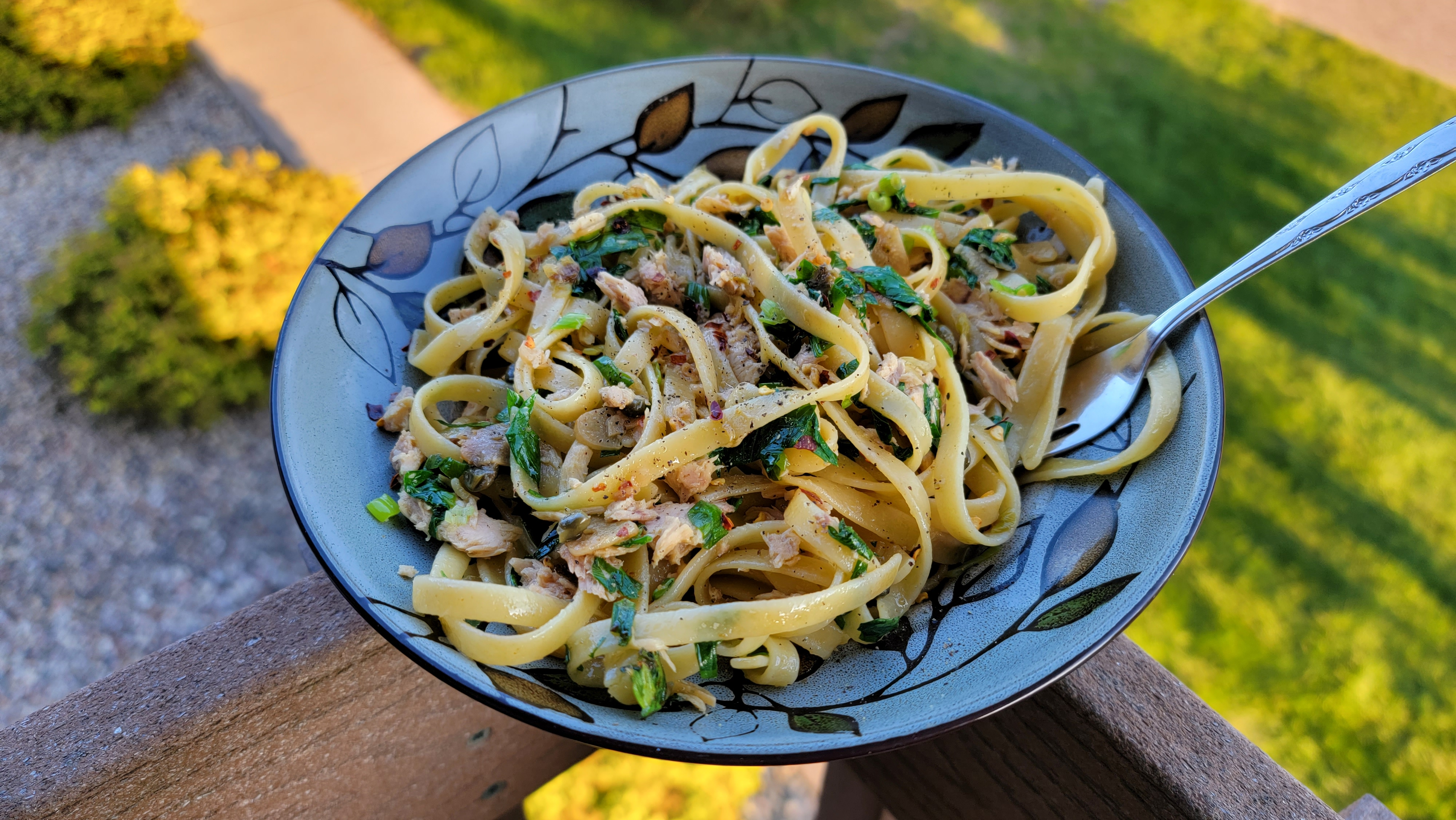Make Better Pasta With A Can Of Tuna
Graduate from StarKist and mix some quality seafood into your noodles.
Canned tuna gets a bad rap. Whether slathered between slices of white bread or baked in a tepid casserole, there's something about that chunk-light flavor that brings to mind cafeteria lines and cat food.
But the sea is a big place, and there are plenty of chickens in its depths. High-quality canned fish is a marvel of shelf-stable protein, with nutrition and flavor to spare. And while it can certainly be enjoyed straight from the aluminum, one of the best ways to eat this fish is also one of the oldest: mix it with some damn noodles.
Not just any pasta will do, however. If you move beyond the egg noodles and frozen peas, there's a whole world of possibilities waiting in your cupboard. Tomatoes, spices, and even lemons or herbs—all of these will benefit from the addition of premium tuna.

Olive oil vs. water-packed tuna
There are questions to be asked when facing the monolith of the canned goods aisle. Take the packing, for instance: According to the culinary internet, oil-packed tuna is generally considered the superior fish. It's usually richer, more calorie-dense, and infused with more overall flavor.
The price, however, is commensurate with these factors. I've sampled both types and found them, if not equally delicious, closer than you'd expect. The oiled stuff is luxurious, no doubt. But depending on how you plan to use it, you might not need the richness of the oil, and the water-packed offers the same hit of protein without the added fat.
Both versions have a role in your kitchen. If you're planning to mix the tuna into something that's already strongly seasoned, then dumping in a can of the super-premium, olive-oiled stuff feels a little wasteful. My rule of thumb is this: If tuna is the star (as with the first example below), then go with the oil. For something bursting with tomatoes, garlic, and pepper flakes, you can get away with the water-packed.
There's a lot of marketing jargon when it comes to catch methods and species. So long as you're buying something with a combination of "solid," "albacore," or "line and pole caught" on the label, you're in for a tasty time. On the subject of species, skipjack is also a good bet, and yellowfin has its charms (though it can taste a bit more fishy). Buy a can of each, give them a taste, and choose your favorite before reaching for the colander.

Incorporate fancy tuna into your pasta
"Pantry pastas" garnered considerable attention at the height of COVID-19. The ability to make something delicious and comforting with mostly shelf-stable ingredients helped not only to keep us fed, but productively distracted. And with the mounting cost of groceries, these humble meals aren't going away anytime soon.
Canned tuna is a natural addition. Say, for instance, you find yourself with an abundance of garlic, capers, and parsley. You can toss the first two in a medium-heat pan with some olive oil, stir in some pasta and its cooking water, and garnish the whole thing with the herbs. Toss in an entire can of oil-packed tuna right near the end, squeeze over some lemon juice, and listen to the fish sing.
This simple method produces a rich, unctuous dinner that's still light enough to keep you from collapsing on the sofa. I'd also advise adding a few anchovies to the mix, which brings to mind a second iteration.
We're talking, of course, about the monarch of pantry pastas: The spicy, briny puttanesca. Personally, I think this dish is flawless as-is. Olives, capers, pepper flakes, anchovies, garlic, and tomatoes? Yes, please, grazie and thank you very much.

But if you want to mess with perfection, a can of high-quality tuna is a good way to do it. The version shown here incorporates all the usual suspects. Again, stir in the tuna at the end, and you've taken a relatively humble dish to an entirely new level. Imagine if the tuna casserole from your high school graduated with honors, decided to study abroad in Italy, fell in love, and never left. You might as well print the recipe on the cover of a romance novel.

But these two tuna pairings are just the tip of the iceberg. Mix some tuna into your salads, spread it in a wrap, or eat it straight from the tin. So long as you've got a few cans floating around, rich, delicious tuna can elevate a whole world of weeknight dishes.


